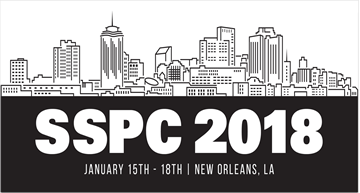Search
Individual Conference Papers
View as
Sort by
Display
per page
Strengthening Concrete and Steel Bridges Using FRPs
Product Number:
51218-093-SG
Publication Date:
2018
$20.00
Stress Corrosion Cracking (SCC) and Electrochemical Corrosion Study of Cold Formed Alloy 625 (UNS N06625) In Extremely Low pH and High Chloride Conditions
Product Number:
51322-17782-SG
Publication Date:
2022
$20.00
Stress Corrosion Cracking And Hydrogen Embrittlement of High-Strength Non-Magnetic Alloys In Hot Concentrated Brines
Product Number:
86162-SG
Publication Date:
1986
$20.00
Stress Corrosion Cracking Assessment of the Weldment of Newly Used Grade of and T HSLA Steel
Product Number:
51315-5961-SG
ISBN:
5961 2015 CP
Publication Date:
2015
$20.00
Stress Corrosion Cracking Behaviour Of Thermally Aged Alloy 182
Product Number:
ED22-17291-SG
Publication Date:
2022
$20.00
Stress Corrosion Cracking of 18-Inch Diameter Pipeline (X52)
Product Number:
51312-01130-SG
ISBN:
01130 2012 CP
Publication Date:
2012
$20.00
STRESS CORROSION CRACKING OF 304L STAINLESS STEEL AND 1 l/4 Cr - l/2 MO STEEL IN CAUSTIC ENVIRONMENTS IN SYNGAS SERVICE
Product Number:
51300-98590-SG
ISBN:
98590 1998 CP
$20.00
Stress Corrosion Cracking Of A Stainless Steel Vacuum Tower Bottom Line
Product Number:
51321-16553-SG
Publication Date:
2021
$20.00
Stress Corrosion Cracking of Austenitic Grade 347 and Duplex Grade 2205 Stainless Steels in Refinery Simulated Media Containing Hydrogen Sulfide and Chloride
Product Number:
51320-14406-SG
Publication Date:
2020
$20.00
Stress Corrosion Cracking of Carbon Steel in CO2 Liquefaction Plant
Product Number:
51324-20393-SG
Publication Date:
2024
$40.00
Stress Corrosion Cracking of Superduplex Stainless Steels for Use in H2s Containing Environments in Oil and Gas Production.
Product Number:
51319-13370-SG
Publication Date:
2019
$20.00
Stress Corrosion Cracking Testing Of Laboratory Processed 304/304L Stainless Steel Elbows And Pipe
Product Number:
ED22-18591-SG
Publication Date:
2022
$20.00












